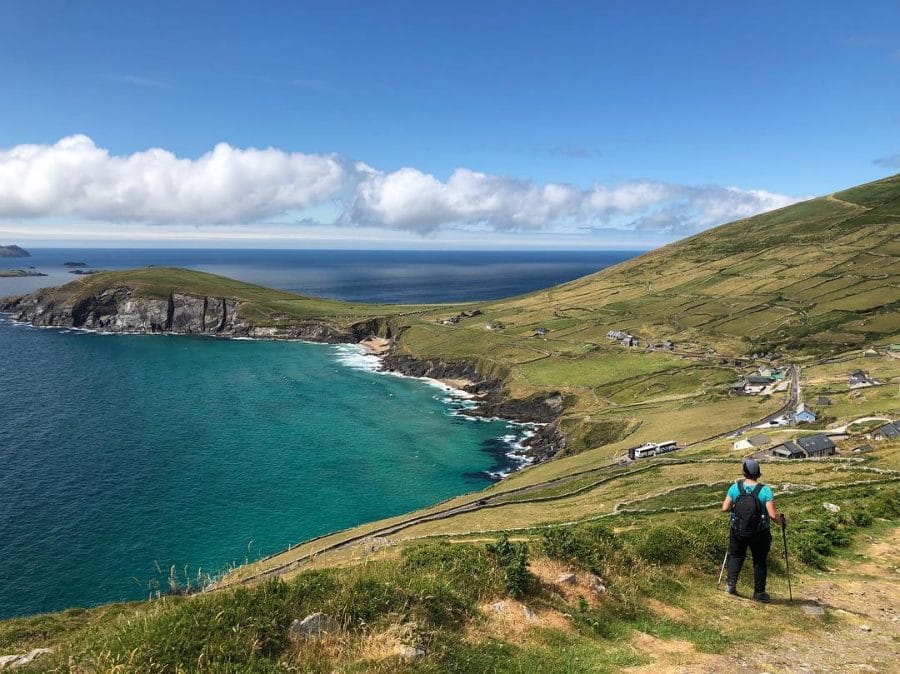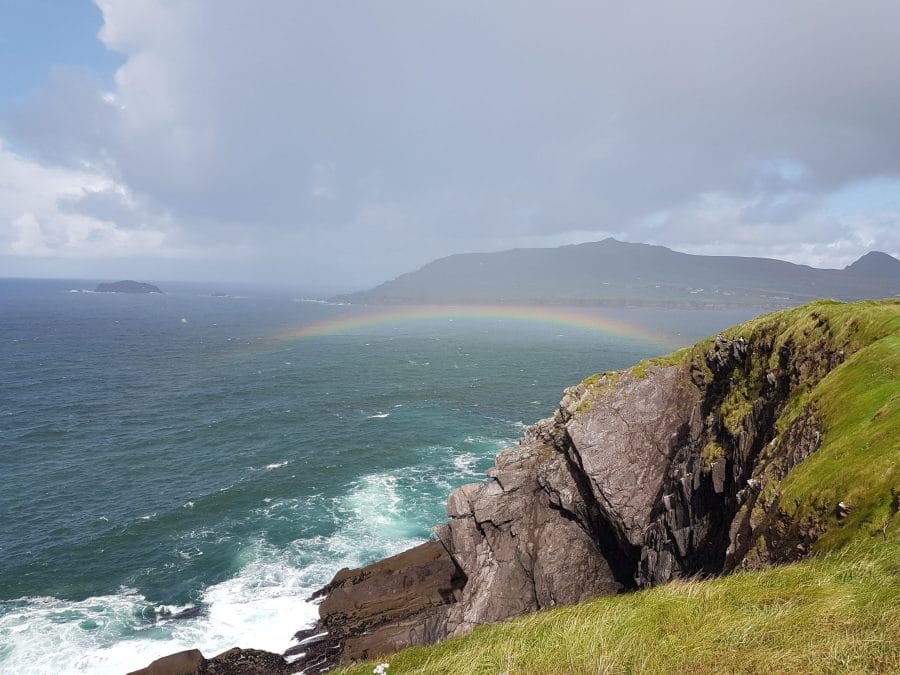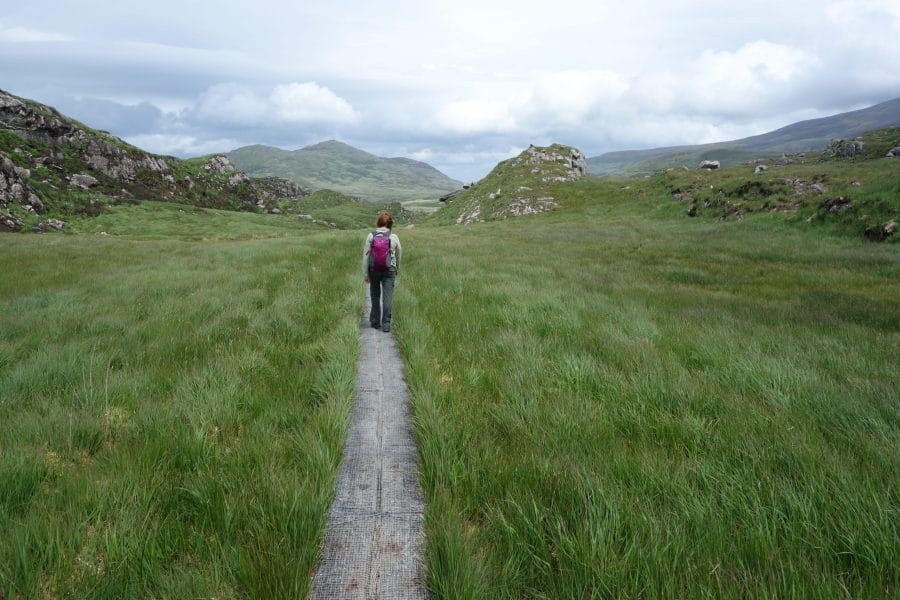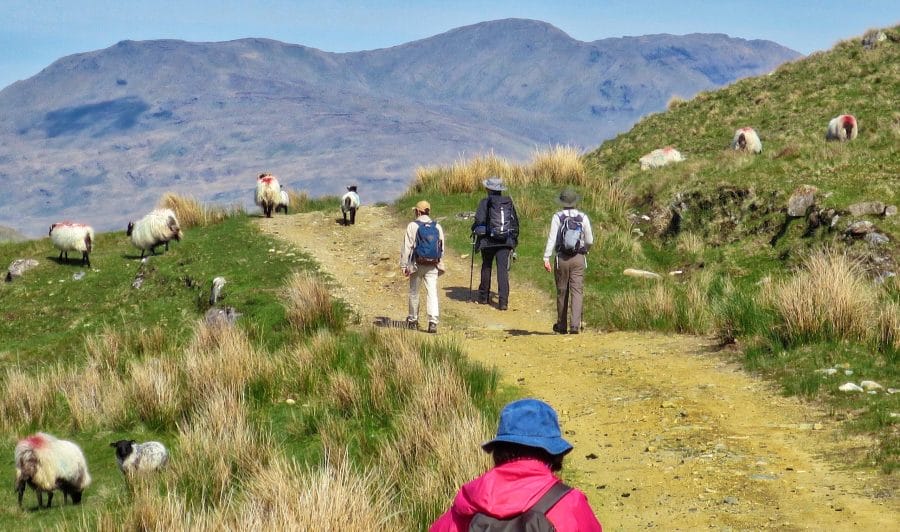Nothing preoccupies the people of Ireland more than the weather in their daily life. As small talk topic number 1, the weather report often follows immediately after the greeting. Because regardless of whether you know each other, the weather affects and connects all residents of the Emerald Island. The changeability of weather conditions only adds to its prominence. So in this blog, we look at some well known and not so well known facts about the weather in Ireland.

1. The maritime climate helps avoid any extreme weather
The Gulf Stream ensures that the winters in Ireland are comparatively mild and the summers are moderate. Nevertheless, the weather offers enough variety. The saying “four seasons a day” means that you can experience traditional weather from all four seasons in a single day at any time of the year.
2. Different types of rain
There are many different words for the severity of rain in Ireland. These range from “wet rain” to “just a shower” to “drizzling”, “sideways rain” and “lashing rain”.
3. Influence on Irish history
Damien Corless has collected curious moments in his book Looks like Rain when the weather influenced Irish history. Partly through exceptional phenomena such as the “Big Snow”, and partly through seemingly mundane events such as the growth of grass and the effects on the ice industry, he shows how the weather has influenced people’s lives in Ireland.
4. The highest temperature ever recorded in Ireland was 33 degrees Celsius. That was in June 1887 at Kilkenny Castle.
For comparison: the warmest months are July and August with maximum temperatures of 25 degrees.
5. Gold at the end of the rainbow
The coexistence of sun and rain means that rainbows can often be seen in Ireland. According to legend, at the end of the rainbow there is a pot of gold that a cunning leprechaun has hidden there.

6. The weather is the number 1 topic of conversation in small talk
According to the generally accepted “How are you?”, which, by the way, can be answered without hesitation with the counter question “How are you” / or the enthusiastic “Not too bad”, is usually followed by the weather report.
7. The best time to travel
Whichever statistic is quoted, one thing is for sure: All information on this topic is provided without a guarantee. The weather is always good for surprises and therefore a challenge for those who like planning security. This applies to tourists as well as to locals if they want to plan the holidays. The job of the weather announcer is therefore risky and responsible. Damien Corless quotes the weatherman Gerard Fleming: “Long weekends are every weather forecaster’s nightmare, because expectations are sky high. Nobody likes to work on public holidays – don’t hope for mercy if the announcement isn’t correct!”
The Irish Meteorological Service publishes regular updates and statistics, including averages over the past thirty years (1981 to 2010). This shows in which months the temperatures were highest and how much precipitation fell. But be careful: it can be very different depending on the region.
Often the time from April to June is recommended for traveling, as statistically these are the driest months with the most hours of sunshine. July and August, however, reach the highest temperatures and in early October you can also experience wonderful late summer days.
You should always have a certain flexibility and, above all, good rainwear with you on a trip to Ireland. And the good thing about the inconsistency of the weather is that the rain showers often pass quickly and some sun can be enjoyed almost every day.
8. Flying fish
In 1839 Ireland was hit by a tornado. The wind was so strong that various newspapers reported that it had thrown fish out of the water. Herring have been found in fields up to nine kilometers from the west coast.
9. The Emerald Island
Ireland owes its nickname and the corresponding vegetation to the mild climatic conditions. Largely frost-free winters and moderate summers ensure the evergreen paint. The Romans saw this less positively. “Hibernia”, the name they chose for Ireland, translates as “Winter Island”.

10. A legendary winter: 1982
Snowfall is rare and due to the lack of ground frost, it does not stay long when it comes. Exceptions become a myth. In the winter of 1982, Dublin was covered in a layer of white snow from January 8-15. This rare phenomenon went down in history as “The Big Snow”.
11. Weather affects the ice cream and chocolate industry
Damien Corless describes an unusual meteorological chain reaction: in 1949 it was long dry around Dublin, the grass remained short and the cows gave little milk. This led to a collapse in ice cream production in this area. In 1953, the opposite happened: cows gave so much milk that workers in chocolate factories had to work overtime to keep up with processing the raw materials.
12. Led Zeppelin owe their famous album cover to the rain
For their album “Houses of the Holy” Led Zeppelin planned a photo shoot in 1973 along the “Giants’ Causeway”. It rained for 10 days in a row and the photographer therefore decided to photograph the two child models in black and white. This created an unreal, creepy effect. The cover achieved cult status and was nominated for a Grammy.
13. A day for the ducks
A rainy day in Ireland is commonly referred to as a “Day for the ducks”.
14. Rainfall: Regional Differences
How much it rains depends a lot on where exactly you are in Ireland. In the west of Ireland and in mountainous regions, precipitation can be twice as high (2000 mm) as in other regions where it is less than 1000mm annual average.

Learnings from the weather in Ireland
As all these anecdotes and facts show, the relationship between people and weather is special in Ireland. Although people like to complain, she is intense and loving. After all, you can learn a lot from the weather: to appreciate the beautiful (sunny) hours and to live in the moment. Discover the magic of rain and manage the balancing act between planning and drifting: so just pack your rain jacket and let happiness come your way.


